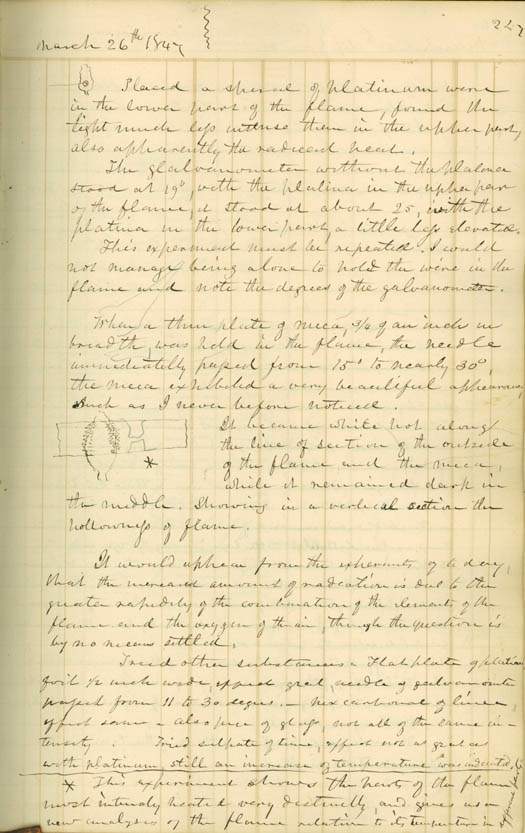 |
|---|
| Henry Documents |
| Chronology |
| Scientists index |
| Bibliography |
| Glossary |
|
Joseph
Henry | ||||
|
DOCUMENTS
| ||||
| "RECORD OF EXPERIMENTS" | ||||
|
March 26th 1847 Placed a spiral of platinum wire in the lower part of the flame found the light much less intense than in the upper part also apparently the radiant heat. [Illustration of spiral in flame] The glalvanometer without the platina stood at 19° with the platina in the upper part of the flame it stood at about 25 withA the platina in the lower part a little less elevated. This experiment must be repeated. I could not manage being alone to hold the wire in the flame and note the degrees of the galvanometer. When a thin plate of mica 3/4 of an inch in breadth was held in the flame the needle immediatelly passed from 15° to nearly 30° the mica exhibited a very beautiful appearance suchB as I never before noticed. [Illustration of mica in flame] It became white hot along the line of section of the outside of the flame and the mica while it remained dark in the middle. Showing in a vertical section the hollowness of flame. It would appear from the experimts of to day that the increased amount of radiation is due to the greater rapidity of the combination of the elements of the flame and the oxygen of the air though the question is by no means settled. Tried other substances-- Flat plate of platina foil 1/2 inch wide effect grat needle of galvanometer passed from 11 to 30 degres-- Nex carbonat of lime effect same--also pice of glass not all of the same intensity. Tried sulpate of lime effect not as grat as with platinum still an increase of temperature was indicated. *This experiment shows the parts of the flame most intensly heated very distinctly and gives us a new analysis of the flame relative to its temperature in different parts. Henry Papers, Smithsonian Archives. A Altered from in B Altered from shuch |

